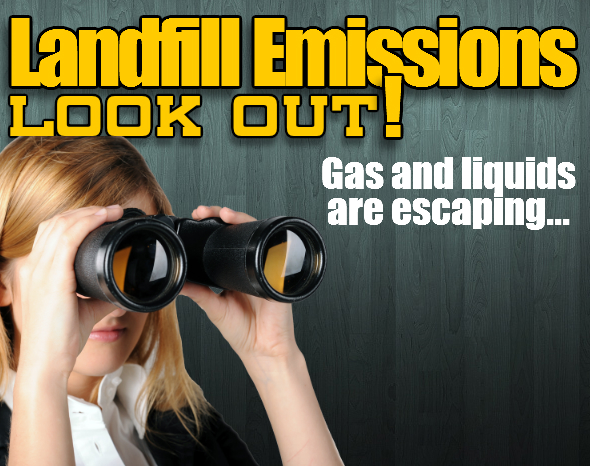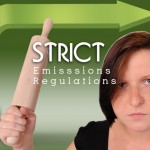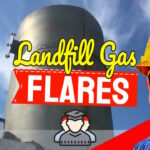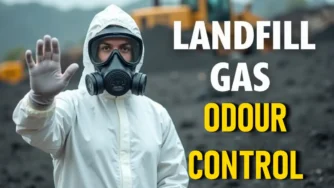The Stringent EA Controls, Which Limit UK Landfill Gas Emissions to Minimise the Emission of Carbon Dioxide thought to be a Significant Cause of Climate Change
The UK waste management industry is required to control landfill gas emissions to a high standard.
The Environment Agency (EA) is responsible for regulating landfills and ensuring that all licensed or permitted landfill sites which contain landfill gas are regulated to ensure that emissions are kept to a minimum. This is enforced either under the pollution prevention and control (PPC) regime or the earlier waste management licensing system, which continues to apply to older sites.

Addressing Neglected Landfill Gas Issues
Beyond the initial measures to reduce methane emissions, landfill operators in the UK are now focusing on long-neglected issues. This includes tackling trace landfill gas compounds and the by-products of combustion. This shift is driven by a greater public awareness of air quality and a desire to reduce carbon dioxide emissions and the overall greenhouse gas effect.
The Challenge of Old Landfills
The author notes a surprising lack of a well-organized program to address closed landfill sites that predate modern licensing laws. Many of these older sites, often owned by local authorities, still have significant gas emissions. While some publicly-owned sites are now equipped with flaring provisions, a comprehensive national strategy remains absent.
Profitable Gas Extraction and Energy Generation
Today, active landfill sites in the UK and across Europe that accept biodegradable waste are equipped with active gas extraction and migration controls. This has turned landfill gas generation into a profitable activity, thanks to government incentives for renewable energy and the grid's readiness to accept the generated electricity. This has led to an increase in the amount of landfill gas being used in power generation plants.
New Environmental Concerns
While these advances have been effective in reducing hazards like explosion risks and lowering greenhouse gas emissions, they have also created new environmental problems. The process of flaring and using landfill gas in engines produces its own set of emissions, which, though lesser, are still a cause for concern.
Emissions from flares and Gas Engines
These emissions were unregulated in the UK until 2003, when new regulations were implemented, and the discharges are now monitored for flare type.
Stricter Rules for Landfill Emissions
Until 2003, emissions from landfill flares and gas engines in the UK went unregulated. However, new rules were put in place, and now these discharges are closely monitored. With support from the Environment Agency and landfill operators, the research community has made significant progress in understanding the different types of emissions from this equipment. As a result, clear standards have now been established.
The Shift to Safer Flares
Back in 2003, about half of all landfill flares were “open” models. Since then, however, operators have invested heavily in enclosed flares that meet the new emissions regulations. Now, most flares—except for those on the very oldest sites—have been replaced with these safer, compliant models. This marks a significant shift toward cleaner technology for managing the gas that's actively being collected from landfills.
The Big Question: How Much Gas Is Actually Captured?
While we've made progress on the types of flares being used, a big question remains: how effectively are we collecting and burning landfill gas to prevent harmful methane from escaping and to recover its energy? The Environment Agency regularly inspects licensed sites, but there's a surprising lack of national data. We don't know exactly how many sites have flares or equipment for using the gas. This is especially true for older sites that closed before 1994, which aren't part of the current licensing system.
New Requirements for a Greener Future
Under the EU Landfill Directive, all sites that accept biodegradable waste must collect and treat the gas. Simply put, if the gas can't be used to create energy, it must be flared. This directive also states that all gas management must be done in a way that minimises environmental harm and health risks.
The Environment Agency worked to get the entire UK landfill sector into this new permitting system, in a huge undertaking that began in 2003 and was completed by mid-2007.
This effort paved the way for the future, now seen throughout the UK, where either flares or power generators are installed and operating at all municipal solid waste landfill sites.
[Published Nov 24, 2012. Updated September 2025.]
Landfill Site Permit Applications – The Role of Risk Assessments in Emissions Control
Landfill site emissions risk assessments are a mandatory requirement for environmental permit applications (previously known as Landfill Site PPC Applications). They identify possible hazards to the environment and public health from landfill gas and leachate. The procedure calls for a thorough examination of landfill emissions, including assessments of the effects on the air, groundwater, and surface […]
Landfill Gas Flares – Selection Installation And Maintenance
Landfill gas flares are now destined to be installed in a lot more landfills globally after COP26. This article is intended to help the anticipated influx of industry newcomers with their Landfill Gas Flare selection, installation, and maintenance. One of the international pledges made during the UN International Climate Change Conference 2021 otherwise known as […]
UK Landfill Gas Emissions – Stringent EA Controls Implemented
The waste management industry is required to control UK landfill gas emissions to a high standard. The Environment Agency (EA) ensures that all licensed (closed) or permitted landfill sites which contain landfill gas are regulated to ensure that emissions are kept to a minimum. This is enforced either under the pollution prevention and control (PPC) […]
Landfill Gas Flares
About three-fourths of currently operational projects in the United States generate electricity from LFG. Electricity for onsite use or sale to the grid can be generated using a variety of technologies, including reciprocating internal combustion engines, turbines, microturbines, and fuel cells. The reciprocating engine is the most commonly used conversion technology for LFG electricity applications […]








Seems like flaring should be stopped if as my council says it is now a climate emergency. Just pipe the landfill gas to somewhere they can use it – like a factory.